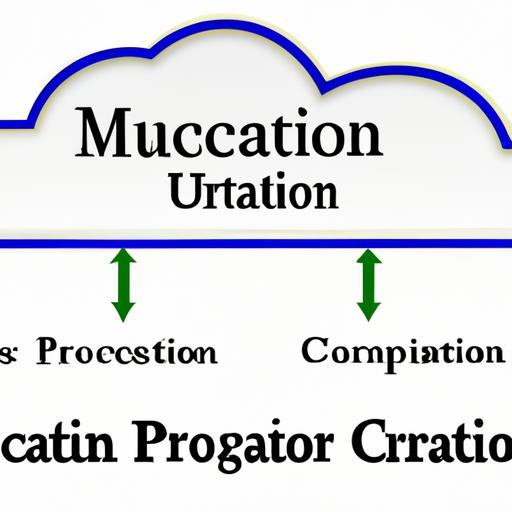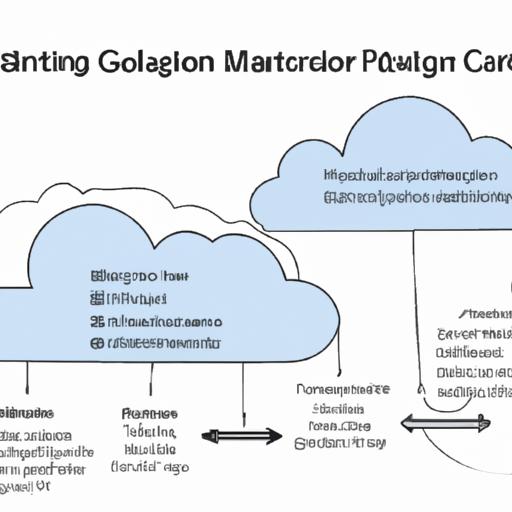Are you considering moving your data center to the cloud? Data center migration to the cloud is becoming increasingly popular as organizations seek to reduce costs, improve scalability and security, and increase efficiency. However, migrating a data center to the cloud is a complex process that requires careful planning and execution to avoid costly downtime and data loss.
In this article, I will provide you with a comprehensive guide to data center migration to the cloud project plan. I will define data center migration to the cloud, explain why having a project plan is essential, and provide a brief overview of what this article covers. By the end of this article, you will have a clear understanding of what is involved in a data center migration project plan, and be equipped with the knowledge to make informed decisions about your organization’s move to the cloud.
Pre-Migration Phase

Before you start migrating your data center to the cloud, you need to conduct a thorough assessment of your current data center infrastructure. This assessment will help you identify the strengths and weaknesses of your current setup, and determine what needs to be migrated to the cloud.
Assessment of Current Data Center
The first step in the pre-migration phase is to assess your current data center infrastructure. This involves reviewing your hardware, software, and network architecture to identify any areas that may need improvement. A comprehensive assessment will help you determine which applications and data should be migrated to the cloud, and what the migration process will entail.
Identification of Business Goals and Requirements
Once you have assessed your current data center, the next step is to identify your organization’s business goals and requirements. This includes understanding your organization’s needs for scalability, security, and performance. You need to determine how the cloud migration will help your organization achieve its goals, and what specific requirements need to be met during the migration process.
Selection of Cloud Service Provider
Choosing the right cloud service provider is critical to the success of your data center migration project plan. You need to evaluate different providers based on their services and pricing, and choose the one that best meets your organization’s needs. Consider factors such as security, reliability, support, and scalability when choosing a cloud service provider.
Budget Considerations
Migrating your data center to the cloud can be costly, so it’s essential to establish a budget for the project. You need to consider the cost of cloud services, migration tools, and any additional hardware or software needed for the migration. By establishing a budget upfront, you can ensure that the project stays within your organization’s financial constraints.
Planning Phase
Planning is a crucial phase of data center migration to the cloud project plan as it lays the foundation for a successful migration. During this phase, you need to create a migration roadmap, define a migration strategy, identify potential risks and challenges, and develop a contingency plan.
Creation of a migration roadmap
A migration roadmap is a document that outlines the steps involved in the migration process, including timelines, dependencies, and milestones. A well-defined migration roadmap provides a clear plan for the migration process and helps to keep everyone involved on the same page.
Definition of migration strategy
The migration strategy defines how you will move your data center to the cloud. It includes decisions about which applications and data to move, which cloud services to use, and how to handle any customizations or integrations. A well-defined migration strategy ensures a smooth transition to the cloud and minimizes the risk of downtime.
Identification of potential risks and challenges
Identifying potential risks and challenges is an essential part of the planning phase. It enables you to anticipate problems and develop a plan to mitigate them. Risks may include data loss, system downtime, and security breaches. Identifying these risks and developing a plan to address them is critical to the success of the migration.
Development of a contingency plan
A contingency plan is a backup plan that outlines what to do if things go wrong during the migration process. It includes steps to take in case of data loss, system downtime, or other unforeseen events. A well-defined contingency plan minimizes the impact of any issues that may arise during the migration process.
Execution Phase
Now that you have a migration roadmap and a defined migration strategy, it’s time to execute your data center migration project plan. The execution phase involves four main steps:
Preparation of the Environment
Before migrating your data and applications to the cloud, you need to prepare the environment to ensure that everything runs smoothly. This involves configuring your cloud infrastructure, setting up the necessary security protocols, and optimizing your network for cloud-based applications.
Migration of Data and Applications
The migration of data and applications is the most critical step in the data center migration project plan. You need to ensure that your data is securely transferred to the cloud without any loss or damage. This can be done by using automated migration tools or by manually transferring data and applications.
Testing and Validation of Migrated Systems
After migrating your data and applications to the cloud, you need to test and validate the migrated systems to ensure that everything is working correctly. This involves testing the functionality, performance, and security of your cloud-based applications.
Deployment of New Infrastructure
Once you have validated your migrated systems, it’s time to deploy your new infrastructure. This involves setting up new servers, configuring load balancers, and optimizing your network for optimal performance. You should also make sure that your cloud-based applications are properly integrated with your existing IT infrastructure.
By following these steps, you can ensure that your data center migration to the cloud project plan is executed successfully, and you can start reaping the benefits of a cloud-based infrastructure.
Post-Migration Phase
Congratulations! You have successfully migrated your data center to the cloud. However, the work doesn’t stop here. The post-migration phase is crucial to ensure that your migrated systems are functioning correctly, and any issues are resolved promptly. In this section, I will outline the essential steps to take during the post-migration phase.
Validation of Performance and Security
The first step in the post-migration phase is to validate the performance and security of your migrated systems. This involves conducting thorough tests to ensure that everything is functioning as expected. Performance testing involves checking the speed and responsiveness of your systems, while security testing involves identifying and addressing any vulnerabilities that may have been introduced during the migration process.
User Acceptance Testing
User acceptance testing (UAT) is a critical step in the post-migration phase. UAT involves testing the migrated systems with end-users to ensure that they meet their requirements and expectations. This step ensures that the migrated systems are not only technically sound but also usable and intuitive for end-users.
Creation of a Post-Migration Support Plan
During the post-migration phase, it is essential to create a post-migration support plan. This plan should outline the procedures for addressing any issues that may arise after the migration. It should also include contact information for technical support and instructions on how to escalate issues.
Evaluation of Project Success
The final step in the post-migration phase is to evaluate the project’s success. This involves comparing the actual results of the migration to the desired outcomes outlined in the project plan. It is essential to document the lessons learned during the migration process and use them to improve future migration projects.
In conclusion, the post-migration phase is crucial to ensure that your migrated systems are functioning correctly and meeting end-users’ requirements. By validating performance and security, conducting user acceptance testing, creating a post-migration support plan, and evaluating project success, you can ensure a smooth transition to the cloud and reap the benefits of your migrated data center.
Conclusion
In conclusion, a data center migration to the cloud project plan is a crucial step for any organization looking to move to the cloud. It requires careful planning, execution, and monitoring to ensure a successful migration. With the right project plan in place, organizations can minimize downtime, reduce costs, and improve efficiency.
Remember, when planning your data center migration project plan, it’s vital to assess your current data center, identify business goals and requirements, select the right cloud service provider, and create a migration roadmap. Additionally, you should define your migration strategy, identify potential risks and challenges, and develop a contingency plan.
By following the steps outlined in this article, you can ensure a smooth and successful data center migration to the cloud project plan. Don’t forget to evaluate your success post-migration and create a support plan to ensure continued success.
At WEEKLY NEWS- Daily News Update, we understand the importance of staying up-to-date with the latest technology trends. We hope this article has provided you with valuable insights into data center migration to the cloud project plan. If you have any questions or would like to learn more about our services, please don’t hesitate to reach out.



